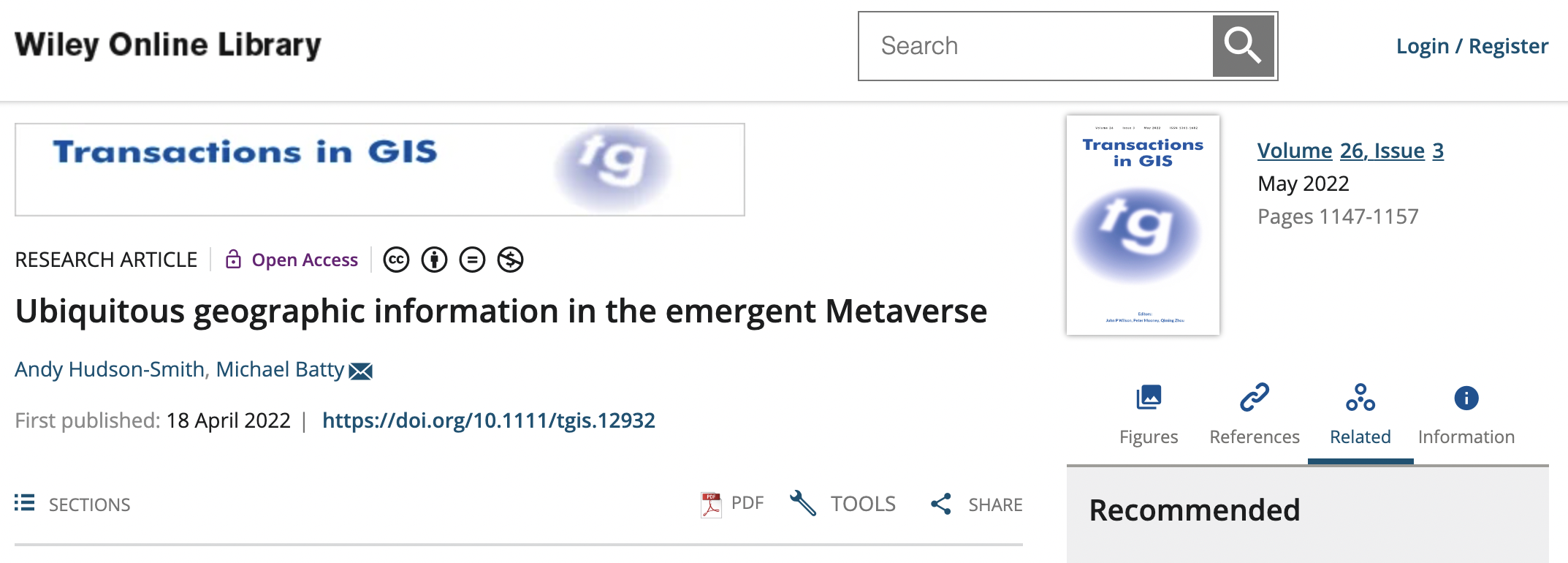Another new paper – this time with Michael Batty –
We sketch a brief history of the development of virtual geographic environments which build on online gaming, three-dimensional representations of cities, and the notion that computer technologies are now so all-pervasive that many different models of the same phenomenon, in this case, geospatial systems, can now be built. This enables new forms of analysis that let us explore future spatial scenarios which address key urban problems through virtual environments. These allow us to experiment with the near future and to this end, we identify three key issues. First, we look at how we can use new technologies to develop all-embracing digital environments which are loosely called the “Metaverse”; second, the development of many models which form various kinds of digital twins having different degrees of “closeness” to the real system; and third, the emergence of platform economies that are beginning to push Metaverse-like technologies into the economic world of networked markets. We conclude with suggestions that these technologies can be used to inform our plan-making capabilities, for example, through geodesign, and we suggest how we might address the key challenges that need to be addressed to make their approaches ever more relevant to urban planning.
You can read the full paper over the Transactions in GIS – Hudson-Smith, A., & Batty, M. (2022). Ubiquitous geographic information in the emergent Metaverse. Transactions in GIS, 26, 1147– 1157. https://doi.org/10.1111/tgis.12932
